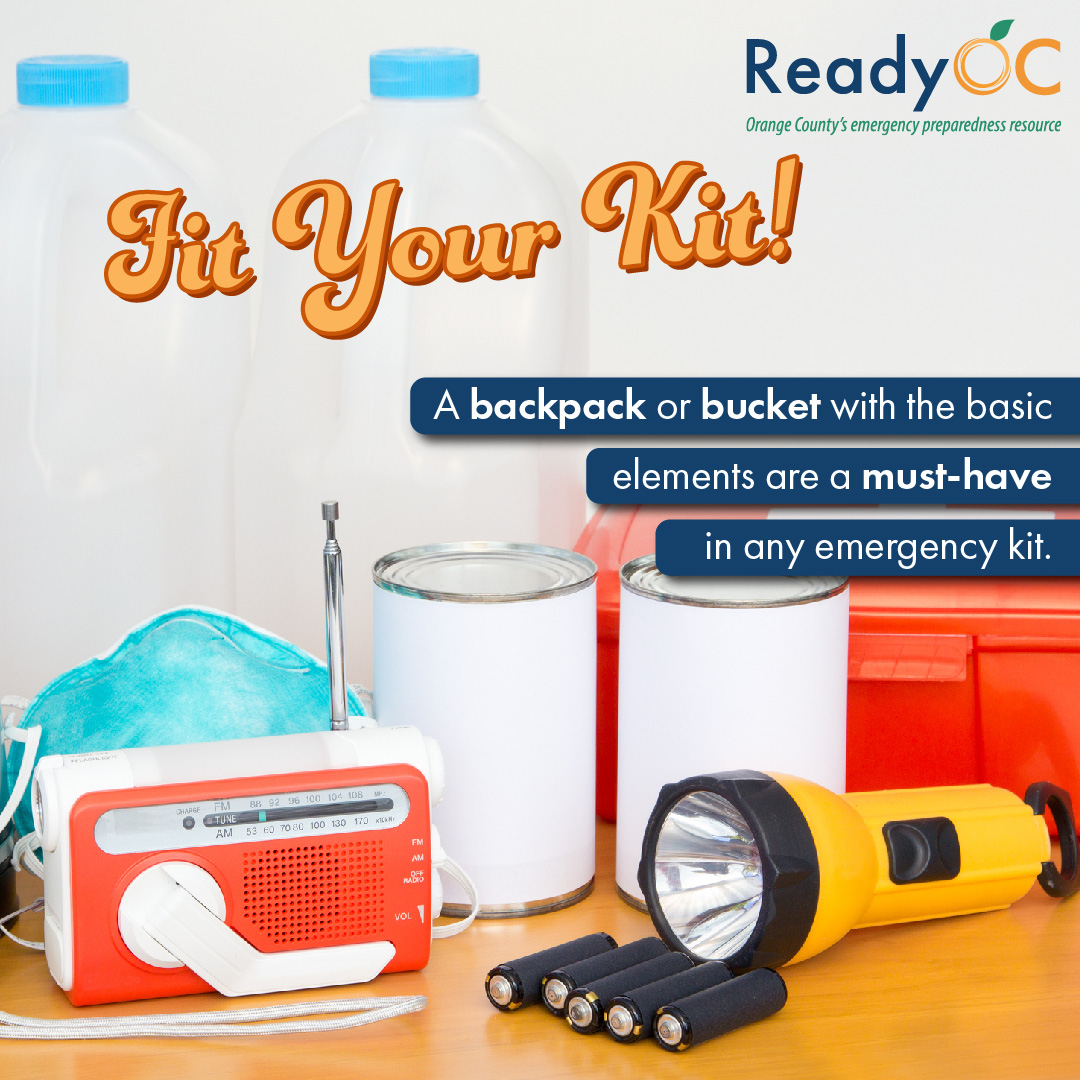Americans were getting back into the holiday traveling spirit after a year when the COVID-19 pandemic ruined many planned get-togethers.
To make up for a lost year, many residents made plans to scatter via planes, trains and automobiles to see families, attend events, and vacation over the holidays.
Then along came the Omicron variant and resurgence of the Delta variant of the virus. Once again holiday travel plans have been thrown into turmoil.
With the continuing uncertainty many experts have taken a wait-and-see stance on holiday travel.
In early December, Dr. Robert Murphy, director of infectious diseases at Northwestern University’s Institute for Global Health, told National Public Radio, “people should really get ready to hit the pause button” on their travel plans.
 However, for those who intend to travel over the holidays the ReadyOC initiative offers emergency kits to help ensure they’re prepared for whatever might come up this holiday season. With patience and focus on preparation, you can reduce the stress that sometimes accompanies holiday travel.
However, for those who intend to travel over the holidays the ReadyOC initiative offers emergency kits to help ensure they’re prepared for whatever might come up this holiday season. With patience and focus on preparation, you can reduce the stress that sometimes accompanies holiday travel.
“Planning and patience will go hand-in-hand this holiday travel season,” said Ellen Edmonds, spokesperson for the American Automobile Association. “Travelers should prepare for busy roads and airports.”
Despite warnings and uncertainty, John Wayne Airport is seeing a busy season.
“The Airport is currently preparing for increased traffic, including messaging holiday travel tips in an upcoming press release and social media and maintaining enhanced health and safety guidelines,” said AnnaSophia Servin, spokesperson for the airport. “We are also working closely with the Orange County Sheriff’s Department and TSA to support the anticipated increase in travelers.”
As part of its messaging, John Wayne has prepared a Healthy Travels Video for prospective travelers.
Prior to the emergence of the latest coronavirus variant, AAA predicted 53.4 million people to travel for the Thanksgiving holiday, up 13 percent from 2020 and near pre-pandemic levels, with air travel almost completely recovering.
According to NPR, U.S. airlines flew about 2.4 million passengers on Nov. 28. That was the most since February 2020 and the industry says Christmas holiday travel is approaching pre-pandemic levels as well.
Travel in the age of COVID-19
Consider being vaccinated.
Foremost, not only for your own safety but that of others, including children not eligible for vaccination, the CDC recommends people delay travel until after they are vaccinated. COVID-19 has mutated, but it hasn’t gone anywhere and will be with us for the foreseeable future.
The highly contagious omicron variant has taken off and taken over as the most prevalent of COVID-19 cases and is surging.
“The expectation that COVID-19 will become endemic essentially means that the pandemic will not end with the virus disappearing,” Harvard immunologist Yonatan Grad told the Harvard Gazette.
Rather, he says, over time, if enough people gain immune protection from vaccination and natural infection there will be less transmission and COVID-19-related hospitalization and death, even as the virus continues to circulate.
Approved face coverings are mandated indoors in California.
Federal law requires air travelers, rail and public transportation users to wear masks at all times. The masks are also required in facilities such as airports and train stations.
Anyone with symptoms of illness should stay home. Outdoor gatherings are safer than indoor, in-person gatherings. Check you destination for specific regional mask mandates.
If you plan to travel internationally, although you may be able to leave the U.S. without COVID-19 testing, you will need to get a COVID-19 viral test (regardless of vaccination status or citizenship) no more than one day before you travel by air into the United States.
You must show your negative result to the airline before you board your flight.
You should also check your destination’s COVID-19 situation and travel requirements. Countries may have their own entry and exit policies.
The CDC also recommends taking a COVID-19 test and wearing a mask if attending gatherings with people from multiple households.
John Wayne Airport also has a factsheet about COVID-19 and air travel.
Travelers by train are required to follow the same face mask requirements as air travelers. Amtrak, the nation’s preeminent long distance railroad passenger travel provider, is expecting a large volume of travel over the holiday. Although Amtrak is no longer limiting capacity on its trains, it continues to offer services such as contactless boarding and other touch-free options, including an app where one can get boarding passes and travel information.
“We want to ensure our customers feel a renewed sense of confidence when they travel with us this holiday season,” Amtrak CEO Bill Flynn said in a statement.
Many travelers during the holidays journey by car, which is actually the most dangerous form of transportation. According to the National Highway Traffic Safety Administration more than 38,000 people died in 2020 in traffic accidents, despite driving less miles.
Although traffic fatalities on and around Christmas and New Year actually are less likely than holidays such as Labor Day, caution is important. That is especially true this year, with higher traffic volume expected.
Edmonds with AAA says, “be sure to get a full vehicle inspection ahead of your trip and have key components like your battery, engine and tires checked out.”
The Red Cross recommends packing emergency and first aid kits. Take along a mobile phone along with a charging cord and an adaptor for your car.
Also check out weather conditions you may encounter and consider how to travel around storms if possible.
Also make sure you are rested and don’t drink and drive.
Edmonds recommends, “if you’re driving, hit the road when there’s less traffic and allow for extra time when traveling to your destination.”
And always buckle up.
Other safety precautions
No matter your preferred mode of travel, packing supplies, such as masks and hand sanitizer (with at least 60 percent alcohol) is a good idea. Regularly clean hands and avoid touching your eyes, nose, and mouth.
COVID-19 is not the only potential problem facing holiday travelers. It is smart to check the weather at your destination to make sure you are prepared with proper clothing and ready for adverse circumstances.
Keep a close eye on your possessions. Christmas gifts are a popular target for thieves at this time of year.
Finally, reducing stress and approaching holiday travel rested and with optimism and patience are important. After all, the holidays are a time to celebrate and being ready and relaxed can make all the difference in an enjoyable experience.
As Edmonds says, “We are all anxious to get back to doing the things we enjoy and seeing the people we love but we must still do so safely.”
 Behind the Badge
Behind the Badge



